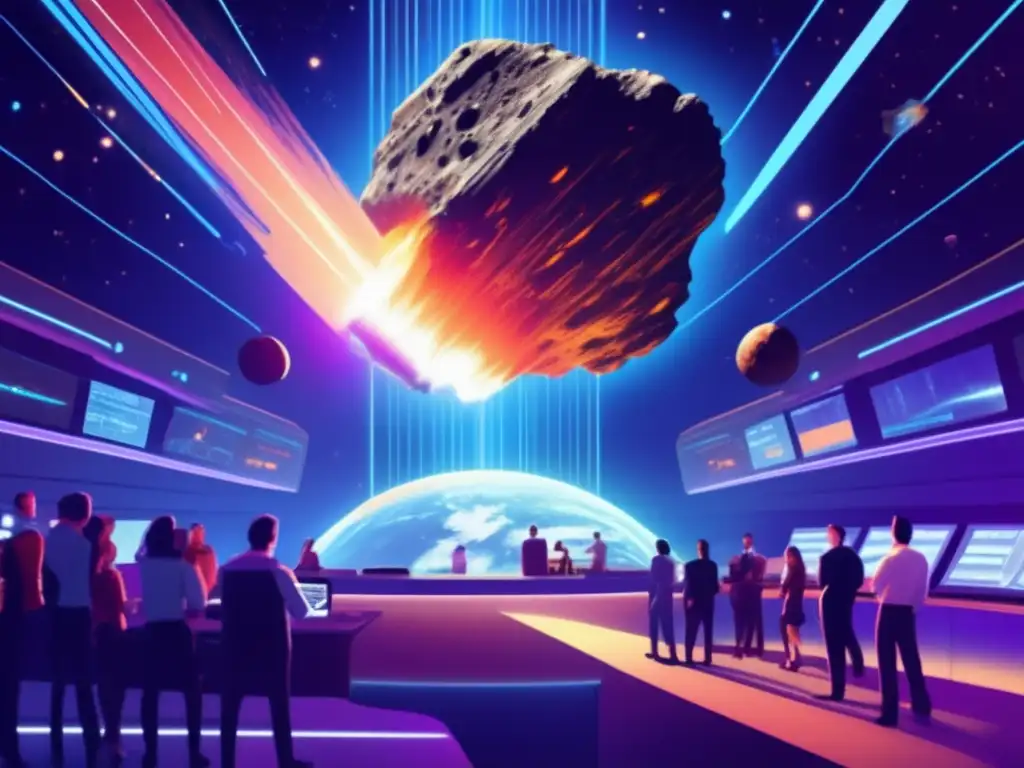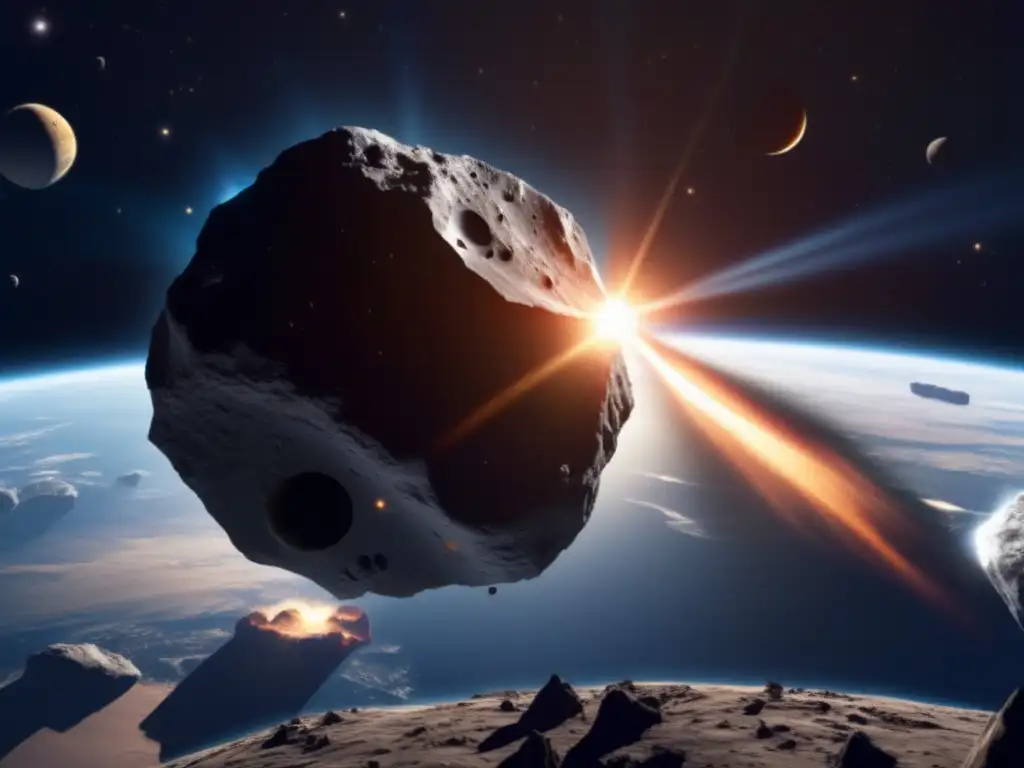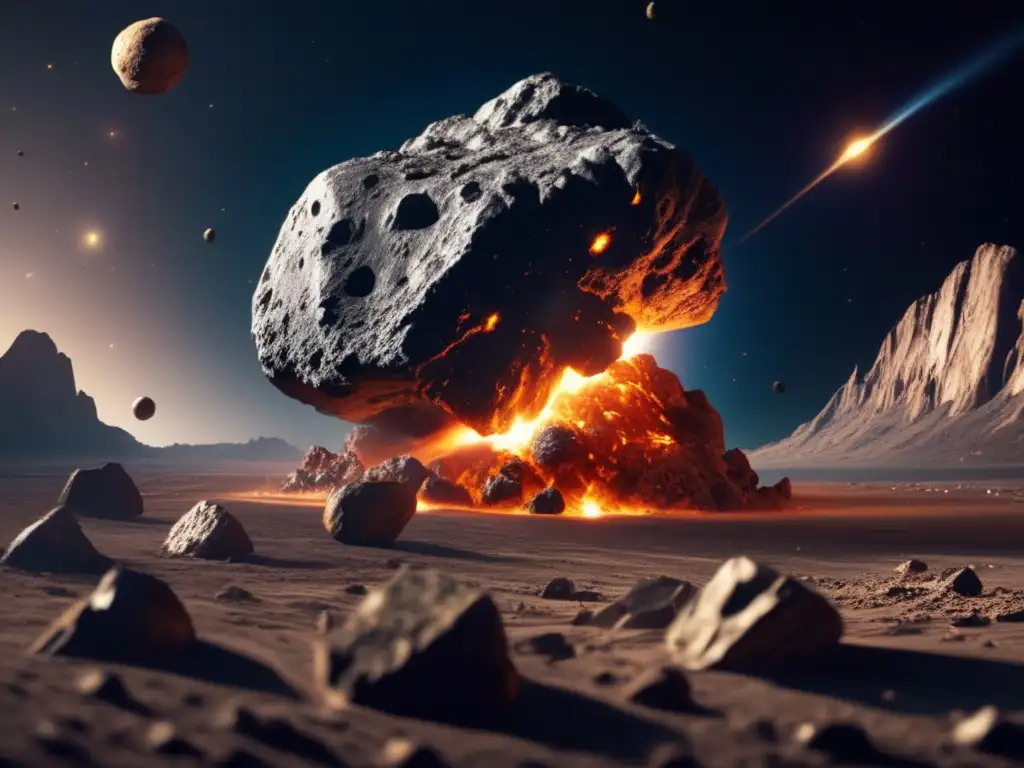Collision Course: How We Plan To Prevent Asteroid Impacts

Introduction
Asteroids have been a focus of scientific study for several decades. These space rocks have the potential to impact the Earth and cause considerable damage. In recent years, scientists and researchers have devoted significant resources to developing methods to prevent asteroids from hitting our planet. This article will examine the various strategies proposed to protect Earth from asteroid impacts.
The Basics of Planetary Defense

What Are Asteroids?
Asteroids are small, rocky objects that orbit the Sun. They range in size from tiny particles to objects several hundred kilometers across. Most asteroids are located between the orbits of Mars and Jupiter in an area known as the Asteroid Belt. However, some asteroids have orbits that bring them closer to Earth.
Why Are Asteroids Dangerous?
Asteroids can pose a significant threat to life on Earth if they collide with the planet. The impact of an asteroid could cause widespread destruction, including loss of life, property damage, and environmental damage. The effects of a large asteroid impact could last for years or even decades.
How Do We Detect Asteroids?
The detection of asteroids is a crucial aspect of planetary defense. Scientists use a variety of methods to locate and track asteroids, including ground-based telescopes, space-based observatories, and radar systems. Once an asteroid is detected, its size, orbit, and trajectory can be determined to assess the risk it poses to Earth.
Strategies for Preventing Asteroid Impacts

Gravity Tractor
A gravity tractor is a spacecraft designed to deflect an asteroid's trajectory by using the gravitational force of the spacecraft to alter the asteroid's course. The spacecraft would be placed in orbit around the asteroid, and its gravitational pull would gradually change the asteroid's trajectory over time.
Kinetic Impact
A kinetic impactor is a spacecraft designed to collide with an asteroid at high speed, transferring its momentum to the asteroid and altering its trajectory. This method is particularly effective for small to medium-sized asteroids.
Nuclear Explosion
A nuclear explosion could be used to deflect an asteroid by vaporizing some of its mass and creating a jet of gas that would alter its course. However, this method is considered a last resort due to the potential risks associated with nuclear explosions.
Gravity Assist
A gravity assist is a technique used to alter the trajectory of a spacecraft by using the gravitational force of a planet or other celestial object. This method could be used to alter the trajectory of an asteroid by using the gravity of a spacecraft to change its course.
The Role of International Cooperation

The Importance of Collaboration
International cooperation is essential for planetary defense. Collaboration between nations can help to pool resources and expertise and ensure that the best possible strategies are developed and implemented.
Current Efforts in Planetary Defense
The international community has made significant progress in developing strategies for planetary defense. The United States, for example, has established the Planetary Defense Coordination Office, which is responsible for detecting, tracking, and characterizing potentially hazardous asteroids and coordinating efforts to prevent impacts.
Future Steps
While progress has been made, there is still much work to be done. The international community must continue to develop new technologies and strategies for planetary defense and improve collaboration between nations to ensure the safety of our planet.
Frequently Asked Questions

-
How often do asteroids impact Earth?
Asteroids impact Earth on a regular basis, but most are small and burn up in the atmosphere. Large impacts occur much less frequently, with events such as the impact that caused the extinction of the dinosaurs occurring every few million years.
-
Can we predict asteroid impacts?
Yes, scientists can predict the future trajectory of asteroids using a variety of methods. However, there is always some degree of uncertainty involved in these predictions.
-
Can planetary defense technologies be used for other purposes?
Many of the technologies developed for planetary defense can have other applications, such as asteroid mining or deep space exploration.
-
What is the cost of developing planetary defense technologies?
The cost of developing planetary defense technologies can vary widely depending on the specific strategy being used. However, the potential cost of an asteroid impact makes it a worthwhile investment.
-
Are there any international treaties related to planetary defense?
Currently, there are no specific international treaties related to planetary defense. However, discussions on this topic are ongoing within the international community.
Conclusion
Preventing asteroid impacts is a critical issue that requires ongoing research, development, and cooperation between nations. While progress has been made in developing strategies for planetary defense, there is still much work to be done. The continued investment in planetary defense technologies is essential to ensure the safety of our planet and the future of humanity.
Thank you for reading this article. We invite you to share your thoughts in the comments section and interact positively with Asteroid Realm, whether by subscribing, sharing the article on social networks, or other forms of participation.
Additional Resources

For more information on planetary defense, please visit the following resources:
- NASA Planetary Defense
- NASA Center for Near-Earth Object Studies
- European Space Agency Near Earth Objects
 Planet Protectors: The Strategies For Asteroid Defense
Planet Protectors: The Strategies For Asteroid Defense Asteroid Alert: The Science Of Planetary Defense
Asteroid Alert: The Science Of Planetary Defense Cosmic Crusaders: Tools For Asteroid Defense
Cosmic Crusaders: Tools For Asteroid DefenseIf you want to discover more articles similar to Collision Course: How We Plan To Prevent Asteroid Impacts, you can visit the Planetary Defense category.
Leave a Reply

Articulos relacionados: